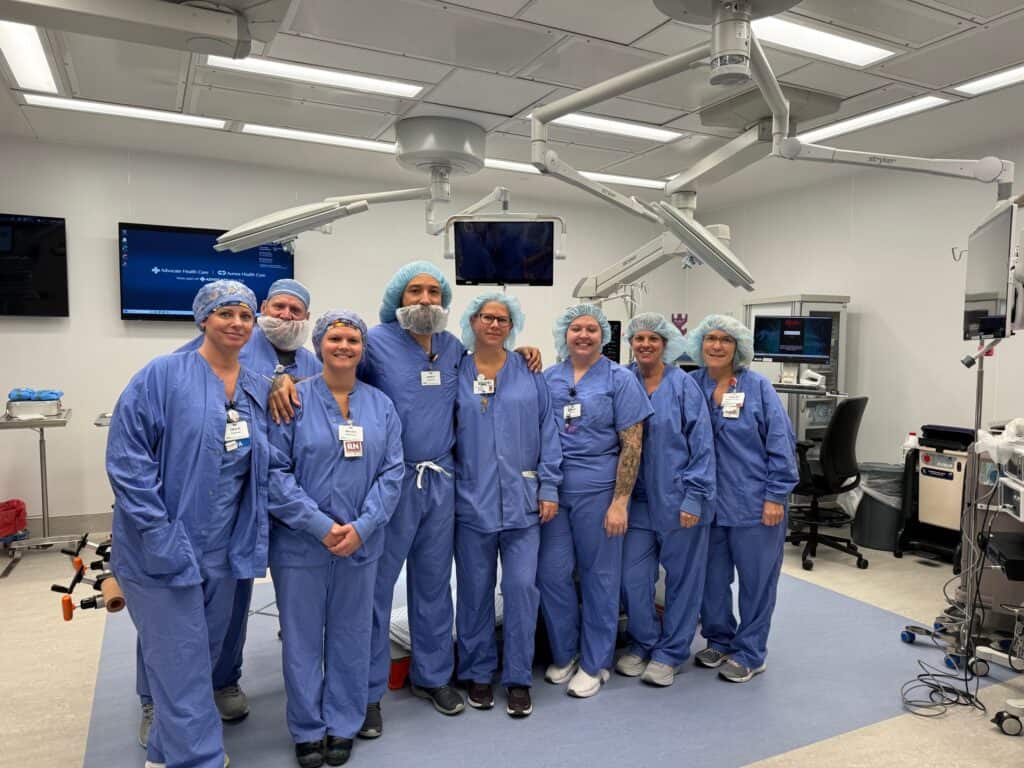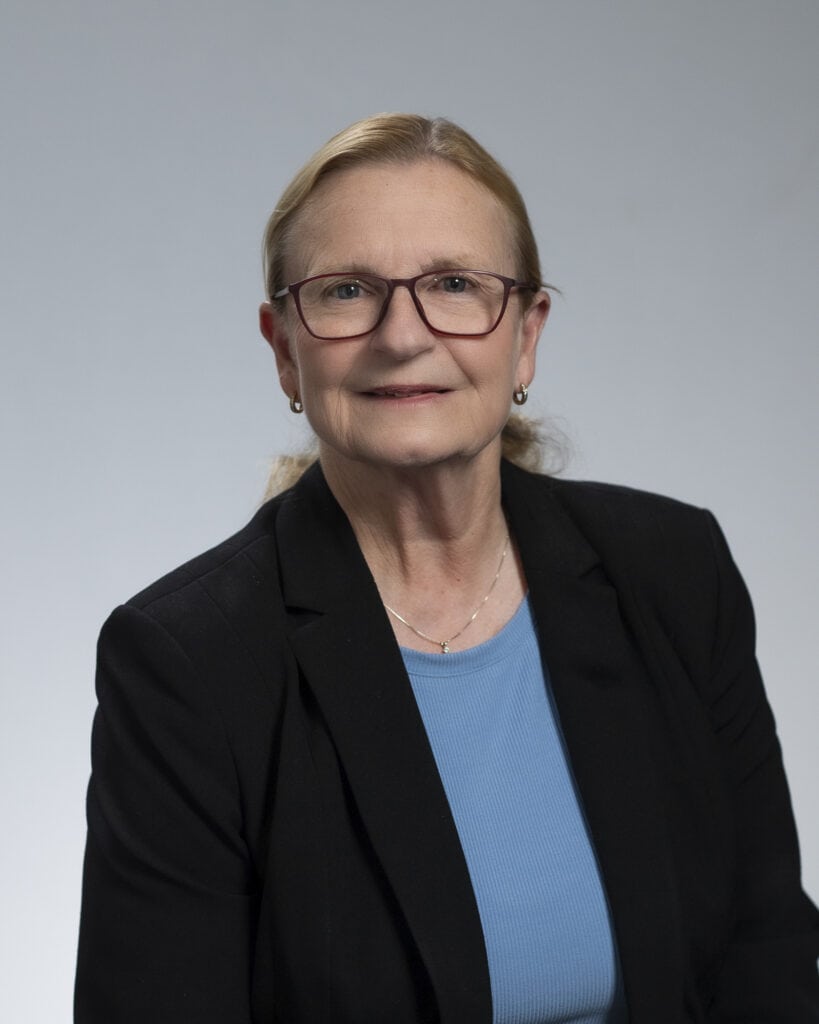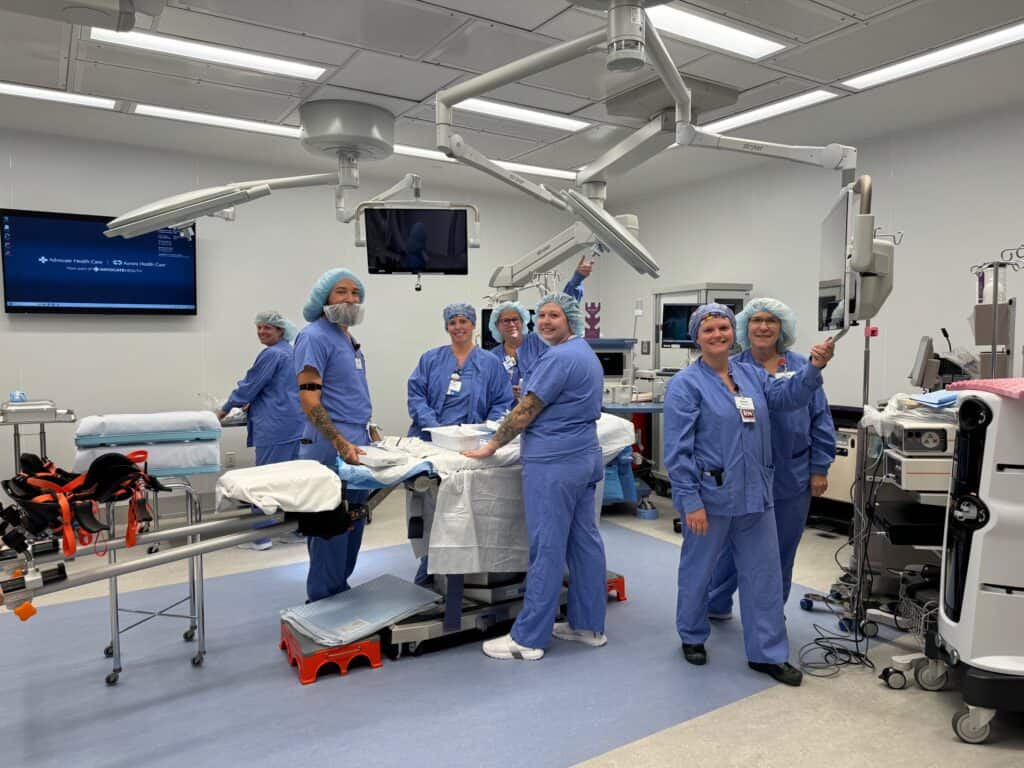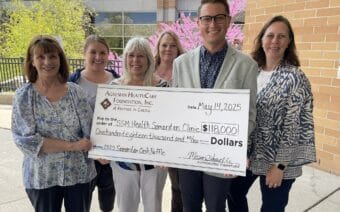
February 10, 2025
MANITOWOC COUNTY – Though about one-fifth of the U.S. population lives in rural areas – and is typically older and requires more medical care – patients often have more limited access to health care.
That is not the case for Manitowoc County residents.
Since November, Cathie Kocourek, president of Aurora Medical Center-Manitowoc County (located at 5000 Memorial Drive in Two Rivers), said the center has made significant investments in local facilities and technology to serve them not only locally but with the highest level of care.
“We are positioning ourselves to be able to deliver care for our community as our population continues to age,” Kocourek said. “Our patient population is primarily the elderly, which mirrors the population of the communities we serve.”
Operating on a new scale
Kocourek said Aurora Manitowoc County’s multimillion-dollar project included the replacement and expansion of its sterile processing department, the addition of two new operating rooms (for a total of six) with improved lighting and updated equipment and an additional post-anesthesia recovery area.
The project, she said, also included an upgraded staff lounge and women’s locker room.

Kocourek said the patient-focused areas will allow Aurora Manitowoc County to accommodate increased surgical volume and create the infrastructure to allow an ambulatory surgery center within the hospital.
The majority of inpatient surgery cases, she said, tend to be orthopedic.
“The driving force behind the OR optimization project is the anticipated increase in growth in orthopedics surgical procedures,” she said.
Not only are surgery centers specializing in orthopedic and spine procedures seeing a surge in growth but Kocourek said they anticipate further growth, with experts forecasting a 12% increase in orthopedics/spine procedures in the next five years and a 22% rise during the next decade.
A cut above: Robotic precision in the operating room
Serving an aging population, Kocourek said, is also a significant part of the impetus behind the center’s investment in the da Vinci Xi robotic system.
The new technology with wristed instruments, she said, allows for more advanced procedures to be performed, bolstering the scale and efficiency of minimally invasive surgery.
Kocourek said the camera is 3DHD and provides 10-times magnification.

James Clancy, general surgeon at Aurora Manitowoc County, said he used this iteration of the da Vinci robot to perform a cholecystectomy for symptomatic gallstones.
But using a da Vinci robot, Clancy said, is nothing new to him.
He said he first used a prior iteration in 2013 and has used it to perform more than 900 surgical procedures in his career.
Since implementing this robot in December, Clancy said he has performed several procedures and anticipates using the robot for several more.
Among other things, he said the robot provides advantages for the doctor – including providing a larger range of motion than available by the human wrist, greater control and an ergonomic means of performing the procedure – and others for the patient.
When a procedure is performed with the robot, Clancy said patients tend to experience less pain and recover quicker.
“It’s likely the robot will be the future of many surgeries,” he said, “because if you can do it safely through small incisions, patients tend to do better.”
Initial surgeries at Aurora Manitowoc County that are using the robot, Clancy said, include gallbladder removal, hernia repairs and other general surgery cases.
He said he anticipates continuing to use the robot for almost any surgical procedure in the abdominal area.
Gallbladder removal, Clancy said, is one of the most common procedures in the United States – with, according to the National Institute of Health, more than 1.2 million cholecystectomies done annually.
In many cases, he said gallbladder removals are removed laparoscopically.
The robot, Clancy said, offers an alternative to this approach.

“The majority of cholecystectomies have been done laparoscopically for the past 40 years, but the difference I see with using the robot is the optics,” he said. “The cameras are 3D, and 3D visualizations are high definition. With the instrumentation, I have greater than seven degrees of motion (then a human wrist can move in) with the robot. Laparoscopic doesn’t have as many degrees of freedom, so the delicate dissection of structures is more challenging.”
Clancy said he sees a place in surgery for both laparoscopic and robotic surgery as options.
“It is always at the surgeon’s discretion what (approach) to use to attack the problem,” he said. “Everything we do in medicine and surgery in particular is individual, and choice (matters). Aurora’s investment in this tool gives us another option now.”
Clancy said he hopes that by the end of first quarter 2025, four or five surgeons will be using the robot so that it is in use every day.
Enhanced patient care
Aurora Health Care’s investment in the operating room expansion and enhancement and da Vinci Xi robot, Basil Salaymeh – vice president, system surgical specialties with Advocate Health Midwest – said, are a reflection of actions the health system is taking across Northeast Wisconsin.
“Robotic surgery and advanced technology are important to enhance patient care and outcomes,” Salaymeh said. “The technology allows surgeons in multiple specialties to perform more complex surgery in a less invasive way, with lower risk and better outcomes.”
Salaymeh said robotic surgery for orthopedics is also available at Aurora Medical Center-Oshkosh.
Robotic surgeries for general surgery, urology and gynecological services, he said, will begin at Aurora Manitowoc County, similar to existing technology available at Aurora BayCare Medical Center in Green Bay and Aurora Oshkosh.
Having these options for patients, Salaymeh said, allows Aurora to be a leader in clinical innovation, health outcomes, consumer experience and value-based care.
At the heart of that, Kocourek said, is the patient experience, and delivering what patients need, where and when they need it.
“The (ultimate benefit) is that people can receive the care they need close to home,” she said.
 ‘It’s never too late to follow your dreams’
‘It’s never too late to follow your dreams’ Seven companies set to participate in TTT’s Start-up Draft Combine
Seven companies set to participate in TTT’s Start-up Draft Combine







